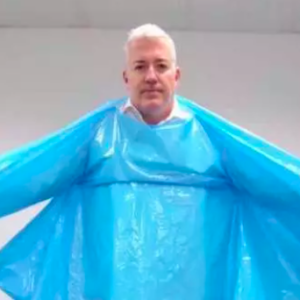COVID-19 has wrought tragedy in long-term care settings. Evidence that the virus is extraordinarily communicable in enclosed, congregate settings can be found on the USS Theodore Roosevelt, in factories and meatpacking plants, in jails and prisons, and — most recently — in an East Lansing, Michigan, bar tied to 158 cases (and growing).
Most of the barflies will live. A grimmer fate awaits many of those infected in long-term care, given age and infirmity.
A bumbling federal response has international parallels, as long-term care settings have been ravaged worldwide.
In the United Kingdom, Prime Minister Boris Johnson was blamed for prioritizing hospitals and allowing untested hospital transfers to be placed in nursing homes.
The governors of New Jersey and New York acted with similar disregard for the most vulnerable. Though Canada has avoided the scale of outbreaks that now add to American exceptionalism, the Canadian Armed Forces are staffing hard-hit Quebec and Ontario facilities.
If we fought COVID-19 as if at war, long-term care would be the most obvious battlefield.
Caring for a resident population that is predominantly funded via Medicaid, nursing homes are federally regulated with an exactitude from dictating temperatures (no cooler than 71 degrees), to citations over whether there is insufficient light or too much light based upon individual resident needs.
For this highly regulated and extremely vulnerable community, what has the federal response been?
Garbage bags.
The Federal Emergency Management Agency (FEMA) announced it was sending personal protective equipment (PPE) to nursing homes across the nation. What arrived were long, rectangular garbage bags in lieu of the disposable, fluid-impermeable isolation gowns that facilities need when a caregiver interacts with a COVID-positive patient.
As long as I am tall (6’3”), and mistaken by some for body bags, the unlabeled garbage bag gowns suffer another infirmity — after one unpeels the perforated sleeves there are no holes through which one’s arms, let alone hands, can protrude.
Even if your hands could protrude, they would not fit in the extra small gloves FEMA sent — a size I wasn’t aware existed. Nor can you wear the “surgical masks” that were sent, because the glued-on plastic ear loops don’t flex to fit your face. These masks are apparently intended to augment the permeable cloth Hanes underwear masks that facilities received in mysterious China Post shipments with no return address.
That nursing home caregivers are expected to wear garbage bags is sadly fitting (or unfitting, as the case might be) symbolism for the way in which nursing homes have been treated by the federal government during the pandemic.
We are fortunate in New Hampshire that state government, within the limitations of its own resources, has supplied personal protective equipment to facilities in need — dropped off by the National Guard. We are also fortunate that the state set up an every-10-day staff testing program.
Why has the federal government not done this for states, at least for nursing homes and those most vulnerable to COVID-19? Shouldn’t nursing home staff have access to the same rapid-result, onsite testing that found the virus in Trump campaign advisor Kimberly Guilfoyle?
As for the defective supplies, during World War II an obscure U.S. senator from Missouri was put in charge of the Committee on Military Affairs’ Subcommittee on War Mobilization. Its job was to ferret out waste and corruption in the government’s contracts. Savings billions of dollars, the Truman Committee, as it was known, catapulted its chairman into national prominence and the vice presidency.
We need similar accountability today. Our federal government is burning through your tax dollars, and New Hampshire has always been a “donor state” paying more than it receives.
Are we to just receive garbage bags and extra small gloves in return?

